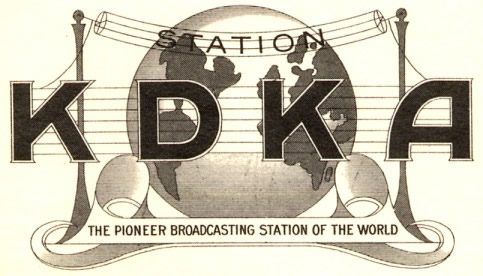World's First Scheduled Radio Broadcast Came from Pittsburgh

The National Broadcasting Company's Silver Jubilee celebration on November 15, 1951, brings to mind another, even earlier, November day when the world's first scheduled broadcast was heard over KDKA, Pittsburgh, pioneer radio station. Presentation of this inaugural broadcast on November 2, 1920, came about as the result of several strange and seemingly unrelated circumstances.
It all began in 1915 with a Westinghouse engineer, Frank Conrad. Westinghouse had been experimenting with the vacuum tube while working on government contracts. To settle a five-dollar bet on the accuracy of his twelve-dollar watch, Conrad built a small receiver to hear time signals from the Naval Observatory at Arlington, Virginia. Fascinated by his new hobby, Conrad turned next to construction of a transmitter, licensed as 8XK, which he installed above his garage in the rear of his home. It is from this station that KDKA stems and with it, radio broadcasting as it is today.
By 1919, messages from 8XK were heard in widely separated locations -- messages discussing the kind of equipment being used and results obtained. Bored by this routine, Conrad, on October 17, 1919, placed his microphone before a phonograph and substituted music for the voice. The music saved Conrad's voice, but more -- it delighted and amazed "hams" all over the country.
Conrad continued to broadcast music on a two-a-week schedule and by late summer 1920, interest had become so general that the Joseph Home Co., a Pittsburgh department store, ran an ad in the Pittsburgh Sun offering "Amateur Wireless Sets for sale -- $10.00 and up."
To H. P. Davis, Westinghouse vice president, who had been an ardent follower of the Conrad ventures, the ad was an inspiration. If this was a fair example of popular reaction to Conrad's broadcasts, the real radio industry lay in the manufacture of home receivers, he reasoned, and in supplying radio programs which would make people want to own such receivers. Davis set about winning other Westinghouse officials to the same view, and so persuasive were his arguments that a station was authorized and election night selected for the grand opening.
The broadcast originated in a tiny, makeshift shack atop one of the Westinghouse buildings in East Pittsburgh. There was no studio. A single room accommodated transmitting equipment, turntable for records; and the first broadcast staff handled telephone lines to the Pittsburgh Post where arrangements had been made to secure election returns by telephone.
Broadcasting began at 8 o'clock election night and continued until noon of the following day, even though James Cox, hours earlier, had conceded the election to Warren Harding. Throughout the night, while the usual crowds stood in a driving rain before outdoor bulletin boards to see returns, a fortunate few, early-morning fans, equipped with crystal sets and earphones, were hearing the same returns in the comfort of their homes. In addition, between returns and occasional music, they heard this request over and over again: "Will anyone hearing this broadcast communicate with us, as we are anxious to know how far the broadcast is reaching and how it is being received." So KDKA was born.
Much of the early history of KDKA is actually the early history of radio. Many of its notable "firsts" are "firsts" of the industry as well. And these KDKA "firsts" have put the station in history books.
From Radio-TV Mirror, November 1951
Add a Comment
All comments are moderated before publication. These HTML tags are permitted: <p>, <b>, <i>, <a>, and <blockquote>.
Top 10 Articles
- The Marriage of Don Ameche and Honore Prendergast
- The Night Arthur Godfrey Fired a Singer On Live Radio
- Early Radio Announcers Invented Their Profession in the 1920s
- The Mythical Town of East Tincup, Colorado
- The Earliest Radio Shows of the 1920s
- The Great Radio Detectives of the 1950s
- The Home Life of Jack Benny
- Why Vladimir Horowitz Stopped Performing in the 1930s
- Judy Canova: The Queen of Hillbilly Hokum
- Some of the Unsung Heroes of Radio

